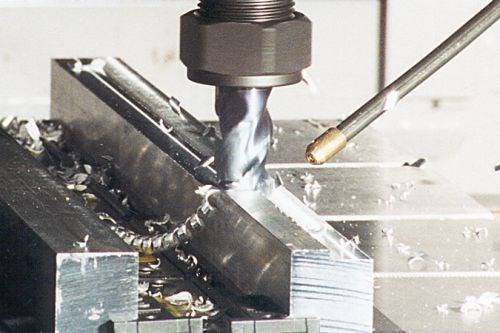Study Details Advantages of MQL for Micromachining
A recent study found that Minimum Quantity Lubrication increased tool life by 100 times versus dry micromachining of 316L stainless steel.
Share





MQL minimizes a shop’s environmental impact by significantly reducing fluid usage and eliminating the need for coolant treatment and disposal.
In a recent e-newsletter, Unist, designer and manufacturer of industrial fluid application systems, cited a study about micromilling 316L stainless steel using Minimum Quantity Lubrication. (MQL is the process of applying minute amounts of lubricant directly to the cutting tool/work piece interface instead of using traditional flood coolants.) The study found that a properly configured MQL process can reduce the built-up edge on a micro cutting tool and increase tool life as much as 100 times compared to dry milling. It cites the importance of quantifying tool runout, wetting both the cutting tool and the workpiece, and properly positioning the MQL stream to maximize lubrication at the chip/material interface.
The report (“Micromilling in Minimum Quantity Lubrication” found in Machining Science and Technology: An International Journal) is available for purchase here. Additional information about the advantages of machining with MQL can be found at Unist’s website as well as this blog post and this article about Ford’s use of MQL.
Related Content
-
168 Manufacturing's Coolant System Automates Delivery
PMTS 2023: FullShop systems monitor and replenish all CNC machine sumps with optimized top-off ratios before the coolant runs low.
-
Master Fluid Solutions Introduces Emulsion for Grinding and Cutting Operations
Trim E860 is said to be an ideal solution for heavy-duty and general machining.
-
STLE Opens Registration for 2024 Annual Meeting
The Society of Tribologists and Lubrication Engineers’ 2024 STLE Annual Meeting & Exhibition will take place May 19-23 at the Minneapolis Convention Center in Minneapolis, Minnesota.
























.jpg;maxWidth=300;quality=90)
